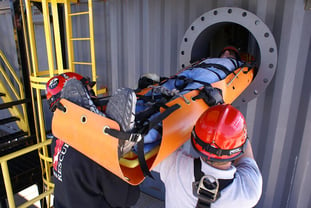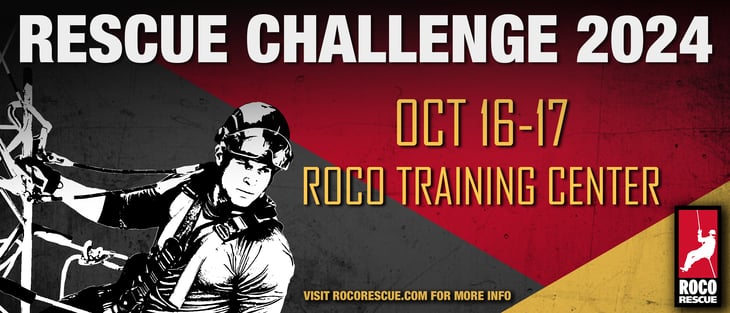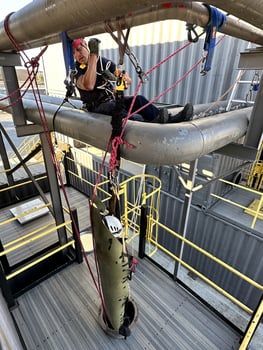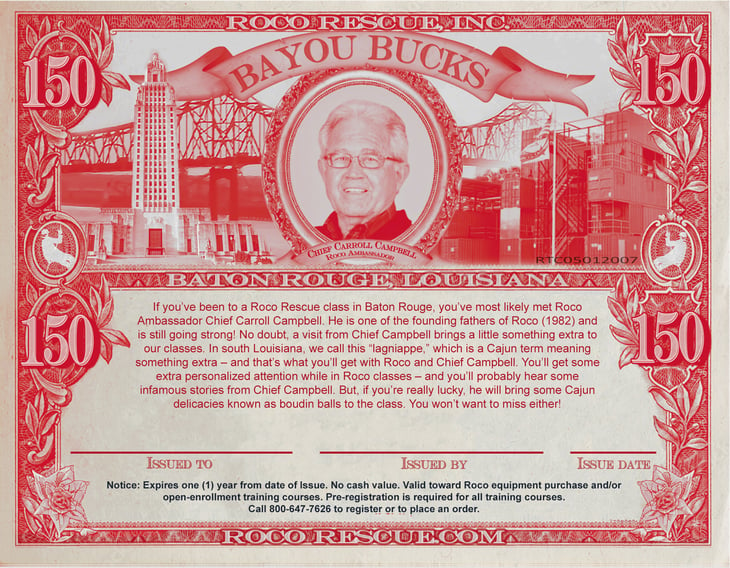
At Roco Rescue, we know every rescue has a story worth telling. Stories of courage, teamwork, and skill that not only inspire but also teach vital safety lessons. That’s why we’re inviting you to share your experiences through our "Recognizing Real Rescues" program, which aims to spotlight these important stories and enhance safety practices across industries.
Why Share Your Rescue Story?
Your stories help build a wealth of knowledge that improves emergency response and safety for everyone. By sharing the details of real rescues, you help others prepare better and respond more effectively in similar situations.
What’s in it for You?
- Recognition: We honor every story submitted with a special plaque, recognizing your team’s success in managing a rescue operation.
- Bayou Bucks™: If we feature your story, you’ll earn $150 in “Bayou Bucks,” which you can use towards buying equipment or open-enrollment training from Roco.
- Collaboration: We work with you to write a detailed account of your rescue, focusing on the challenges you faced and how you overcame them. This not only highlights your team’s skills but also underlines your commitment to maintaining safety.
How to Participate:
- Submit Your Story: Fill out this form to detail the rescue event, including challenges, strategies, and outcomes. You can also upload any relevant photos or videos.
- Collaborate on Your Feature: We’ll work together to create a feature article that will be shared on our website, social media, and newsletters.
Every rescue teaches valuable lessons. Sharing your experiences can help the entire rescue community get better at what they do. No matter the size of your team, your story is important. Let’s share these lessons and keep improving our safety standards. Become a part of our community, which is dedicated to safety and excellence in rescue operations. Visit our website to share your rescue story today.
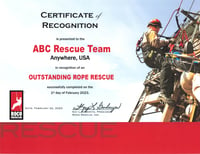 Roco Would Like to Recognize Your Outstanding Rope Rescue!
Roco Would Like to Recognize Your Outstanding Rope Rescue!
Nominate your rescue team so we can recognize your professional efforts with a Roco Outstanding Rope Rescue Plaque. All reports that we receive highlighting an actual rescue event will be considered.
Download the Real Rescue Form here. You can then email the completed form to info@RocoRescue.com.


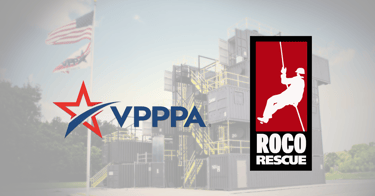
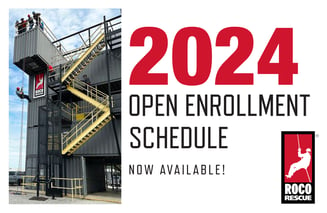


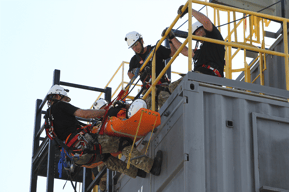 Studies in emergency medicine have brought a critical perspective to the use of spine boards. While they are indispensable in certain situations, these studies highlight the negative effects of prolonged immobilization on a hard surface. Issues such as pressure sores, discomfort, and breathing problems have been reported, suggesting that the use of spine boards should be carefully considered and not automatically applied to all EMS cases.
Studies in emergency medicine have brought a critical perspective to the use of spine boards. While they are indispensable in certain situations, these studies highlight the negative effects of prolonged immobilization on a hard surface. Issues such as pressure sores, discomfort, and breathing problems have been reported, suggesting that the use of spine boards should be carefully considered and not automatically applied to all EMS cases.